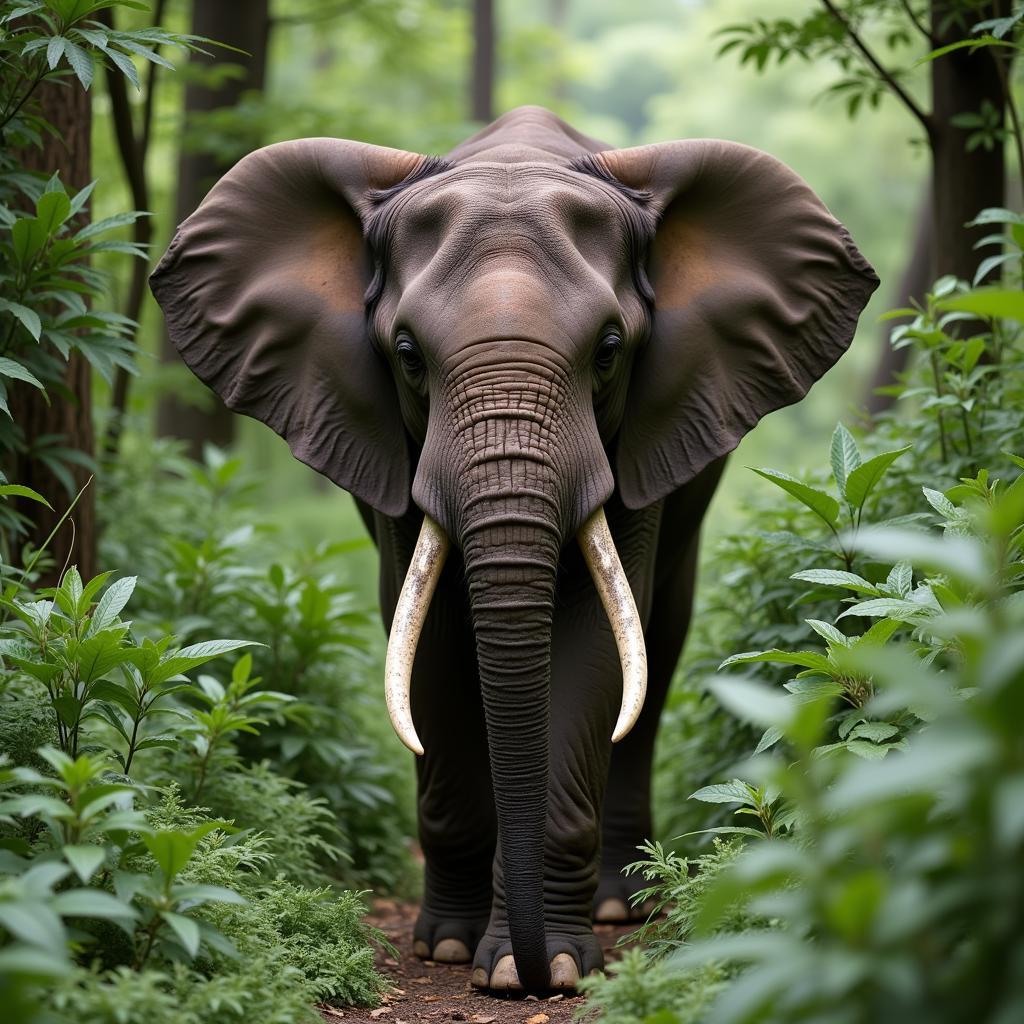African Elephant Habitat Pictures: A Visual Journey
African Elephant Habitat Pictures offer a captivating glimpse into the diverse landscapes these majestic creatures call home. From lush forests to arid savannas, understanding their habitat is crucial to their conservation. This article will explore the varied environments where African elephants thrive, complemented by vivid imagery that brings their world to life.
Exploring the Diverse African Elephant Habitats
African elephants, the largest land mammals on Earth, inhabit a surprising range of environments across the African continent. These habitats, each with its own unique characteristics, play a vital role in shaping the elephants’ behavior, social structure, and survival strategies. Let’s delve into some of the key ecosystems where these magnificent creatures roam.
Savannas: A Classic African Elephant Habitat
Savannas, characterized by vast grasslands dotted with trees, are perhaps the most iconic African elephant habitat. These open landscapes provide ample grazing opportunities, allowing elephants to fulfill their enormous appetites. african elephant movement is crucial for finding food and water in these vast ecosystems.
What does an African elephant eat in the savanna? Their diet primarily consists of grasses, leaves, bark, and fruits from various trees and shrubs. The availability of water sources, often seasonal, influences their movement patterns. Savanna elephants often travel long distances in search of water, especially during the dry season.
Forests: A Haven for Forest Elephants
While savannas are the typical image that comes to mind, African elephants also thrive in dense forests. Forest elephants, a distinct subspecies, are smaller than their savanna counterparts and have adapted to navigating the dense vegetation of their habitat.
What makes forest habitats unique for elephants? The dense canopy provides shade and protection from the harsh sun, while the abundant foliage offers a diverse diet of leaves, fruits, and bark. Forest elephants play a vital role in seed dispersal, contributing to the overall health of the forest ecosystem.
 African Elephant in Forest Habitat
African Elephant in Forest Habitat
Threats to African Elephant Habitats
Unfortunately, African elephant habitats are facing increasing pressure from human activities. Habitat loss due to deforestation, agriculture, and expanding human settlements is a major threat to elephant populations. Poaching for ivory also remains a significant concern.
How can we protect these vital habitats? Conservation efforts focus on protecting existing habitats, creating wildlife corridors, and combating poaching. Community-based conservation programs play a crucial role in involving local communities in elephant protection efforts. 10 facts about african elephants highlight the urgency of these conservation efforts.
Other Key Habitats: Deserts and Wetlands
While less common, African elephants can also be found in other habitats, such as deserts and wetlands. These environments demonstrate their adaptability and resilience. african jungle animals in herds pictures shows the diversity of animal life sharing these habitats.
Where do elephants find water in desert environments? In arid regions, elephants utilize their knowledge of the landscape to locate hidden water sources, such as underground springs and dry riverbeds. They also dig for water, creating vital resources for other animals.
Dr. Anika Malima, a renowned wildlife biologist, emphasizes the importance of habitat preservation: “Protecting the diverse habitats of African elephants is not only crucial for their survival but also for the health of the entire ecosystem. They are keystone species, playing a vital role in maintaining biodiversity.”
Professor Joseph Nyerere, a leading expert in African elephant ecology, adds, “Understanding the intricate relationship between elephants and their environment is essential for developing effective conservation strategies. African elephant habitat pictures provide a valuable tool for both research and public awareness.”
Conclusion
African elephant habitat pictures provide a powerful visual testament to the beauty and diversity of these creatures’ homes. Understanding the intricacies of these habitats is critical for ensuring the long-term survival of African elephants. By supporting conservation efforts and promoting responsible tourism, we can all contribute to protecting these magnificent animals and their unique ecosystems. Let’s continue to explore and appreciate the wonders of the African elephant habitat through impactful imagery and dedicated conservation. african elephant drawing images can inspire further interest in these magnificent animals. african elephant red sunset captures the beauty of the African landscape.
FAQ:
- What are the main habitats of African elephants?
- What do African elephants eat in different habitats?
- What are the biggest threats to African elephant habitats?
- How do elephants survive in desert environments?
- What is the importance of forest elephants in their ecosystem?
- How can we contribute to African elephant conservation?
- What are some interesting facts about African elephant behavior in their habitats?
Need further assistance? Contact us at Phone: +255768904061, Email: kaka.mag@gmail.com or visit us at Mbarali DC Mawindi, Kangaga, Tanzania. We have a 24/7 customer service team.



